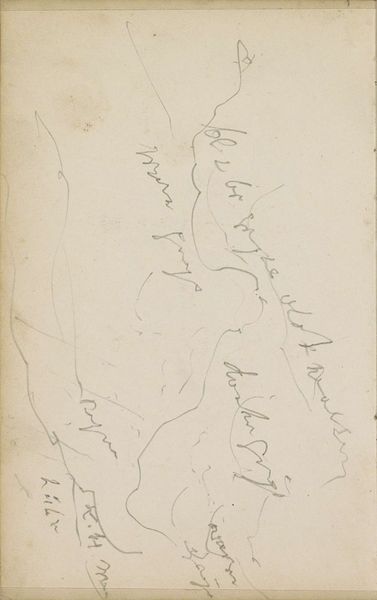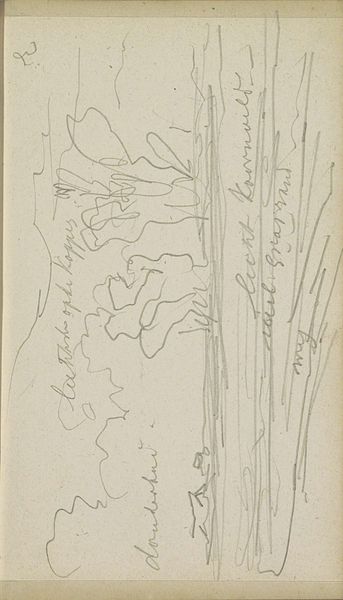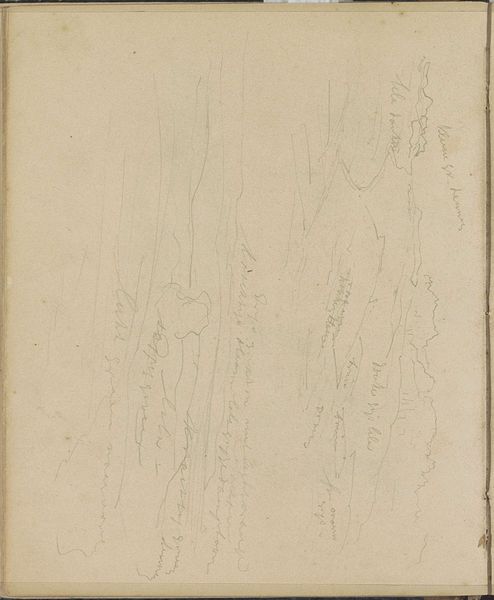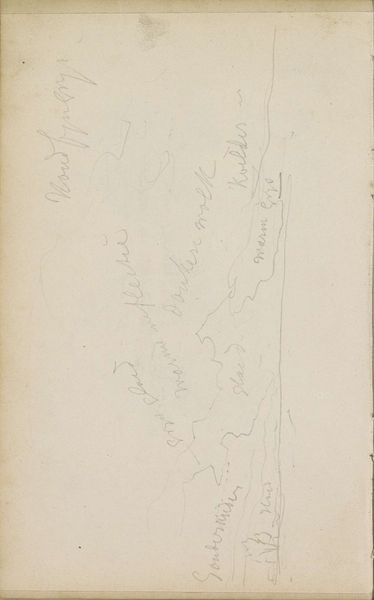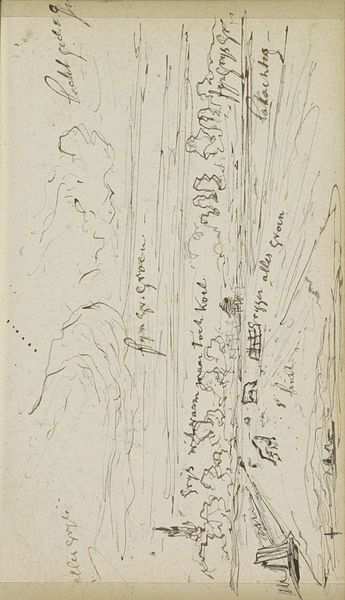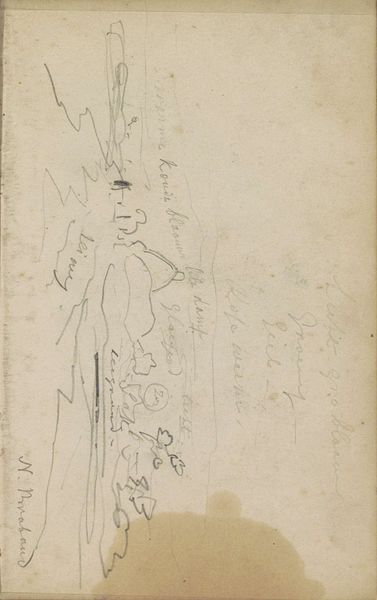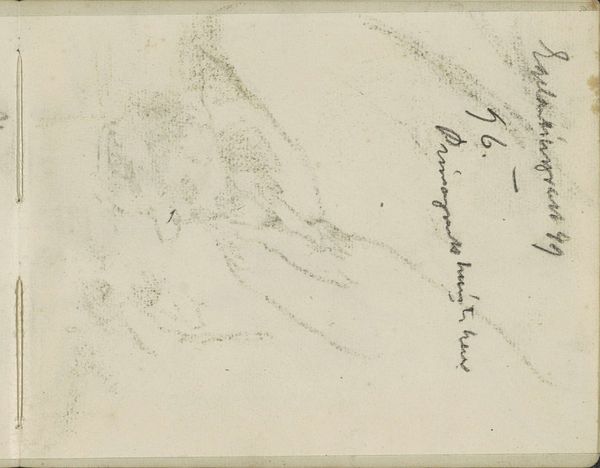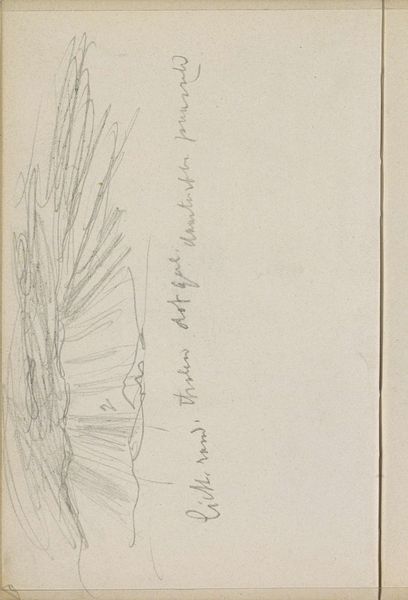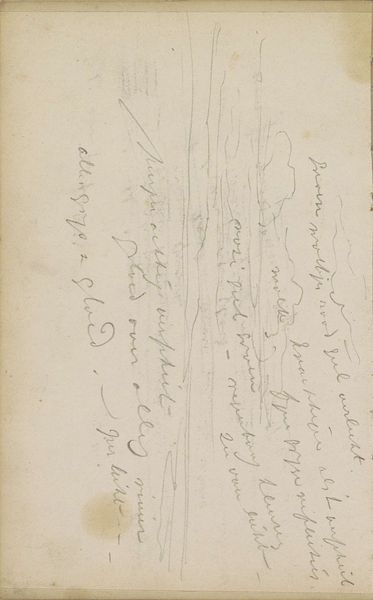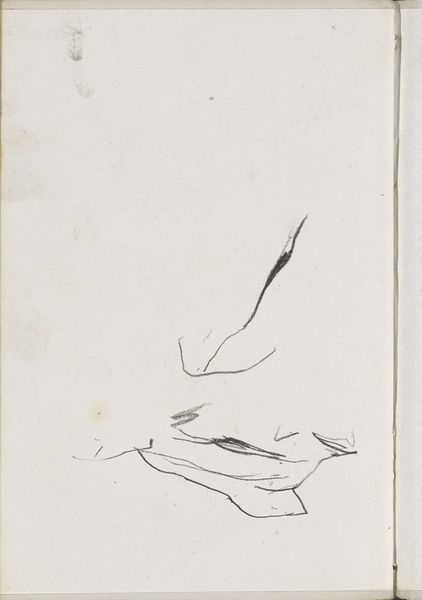
Copyright: Rijks Museum: Open Domain
This sketch, titled "Landschap," was made by Johannes Tavenraat in the Netherlands sometime in the 19th century. On its surface, it seems a simple landscape study in pencil. But the image creates meaning through its sparseness. It captures a moment of fleeting observation, a kind of quick notation of the natural world. We might see this work in the context of the rise of landscape painting in the Netherlands, where artists sought to capture the unique qualities of the Dutch countryside. But this is no grand vista, nor a finished painting destined for the walls of a wealthy merchant's home. Instead, its apparent casualness reflects a new kind of artistic sensibility, one that valued direct experience and personal expression. To understand this work further, we would need to delve into the artist's biography, looking at his training and the artistic circles in which he moved. We might also examine the broader cultural context of the time, considering the rise of Romanticism and its emphasis on individual feeling and the appreciation of nature. Ultimately, the meaning of this sketch lies not just in what it depicts, but in what it suggests about the changing role of the artist in society.
Comments
No comments
Be the first to comment and join the conversation on the ultimate creative platform.

